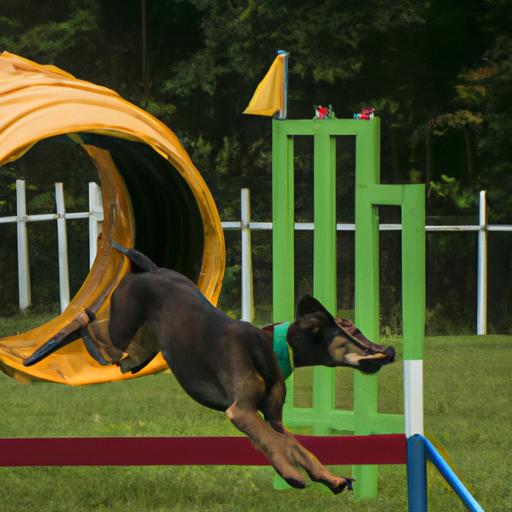Agility training can be a fun and rewarding experience for both you and your canine companion. In this detailed guide, we’ll explore what agility training for dogs is, the benefits it provides, how to get started, and some common questions you may have.
What is Agility Training?
Agility training is a dog sport where you direct your dog through a pre-set obstacle course within a competition setting. The course may include a variety of obstacles such as tunnels, weave poles, jumps, seesaws, and pause tables where the dog must stop for a set amount of time.
In agility training, the dog must navigate the obstacles in a specific order, often as quickly as possible. Trainers use voice, movement, and various body signals to guide the dog through the course. Notably, the trainer cannot touch the dog or the obstacles.
Benefits of Agility Training for Dogs
Agility training can provide numerous benefits for both you and your canine friend.
- Physical Health: Agility training offers a great source of exercise for your dog. Running, jumping, and weaving through obstacles can help improve their strength, coordination, and overall fitness levels.
- Mental Stimulation: The mental challenges involved in learning the course and responding to your commands can stimulate your dog’s mind, helping to keep them sharp and engaged.
- Bonding Time: Agility training requires clear communication and trust between you and your dog, which can help to strengthen your bond.
- Improved Behavior: Regular exercise and mental stimulation can help reduce common behavioral problems like excessive barking or chewing.
- Fun: Last but not least, agility training can be a lot of fun for dogs and owners alike!
How to Get Started with Agility Training
Starting agility training can seem daunting, but with some preparation and patience, it can be a rewarding experience.
Equipment
At its most basic, agility training requires little more than a few makeshift obstacles. You can start with things like broom sticks for jumps or boxes for tunnels. As your dog becomes more confident, you may want to invest in professional equipment.
Here is a simple table to guide you on the basic equipment you’ll need:
| Equipment | Purpose |
|---|---|
| Jumps | To train your dog to leap over obstacles |
| Tunnels | To teach your dog to run through confined spaces |
| Weave Poles | To teach your dog to weave through a series of upright poles |
| Pause Table | To train your dog to stop and stay for a set amount of time |
Training
Start by introducing your dog to each obstacle individually. Use positive reinforcement such as treats, toys, or praise to reward your dog for successfully completing each task. Remember, patience is key. It may take some time for your dog to feel comfortable with each obstacle.
Practicing Agility Training at Home
While joining an agility club can be beneficial, you can also practice agility training at home. Here are some tips:
- Keep Sessions Short: Start with short training sessions and gradually increase the duration as your dog becomes more comfortable.
- Be Consistent: Consistency is key in any form of dog training. Try to set aside a specific time each day for training.
- Make It Fun: Keep the training sessions fun and lighthearted. If your dog is enjoying themselves, they are more likely to perform well.
Frequently Asked Questions (FAQs)
What breeds are best for agility training?
While some breeds are naturally more inclined towards agility training, such as Border Collies and Australian Shepherds, any healthy dog can participate and enjoy agility training.
Can older dogs start agility training?
Yes, older dogs can start agility training, provided they are healthy. However, it’s always advisable to consult with a vet before starting any new physical activity.
How long does it take to train a dog for agility?
The duration of training can vary widely based on factors like the dog’s breed, age, temperament, and previous training experience. However, most dogs can learn basic agility skills within a few months.
What if my dog is not interested in agility training?
Not all dogs will enjoy agility training, and that’s okay. There are plenty of other activities you can try, like obedience training, tracking, or even simple games like fetch.
Remember, the goal of agility training – like any activity with your dog – is to have fun and strengthen the bond between you. So, go ahead, give it a try, and see how much fun you and your furry friend can have together!



